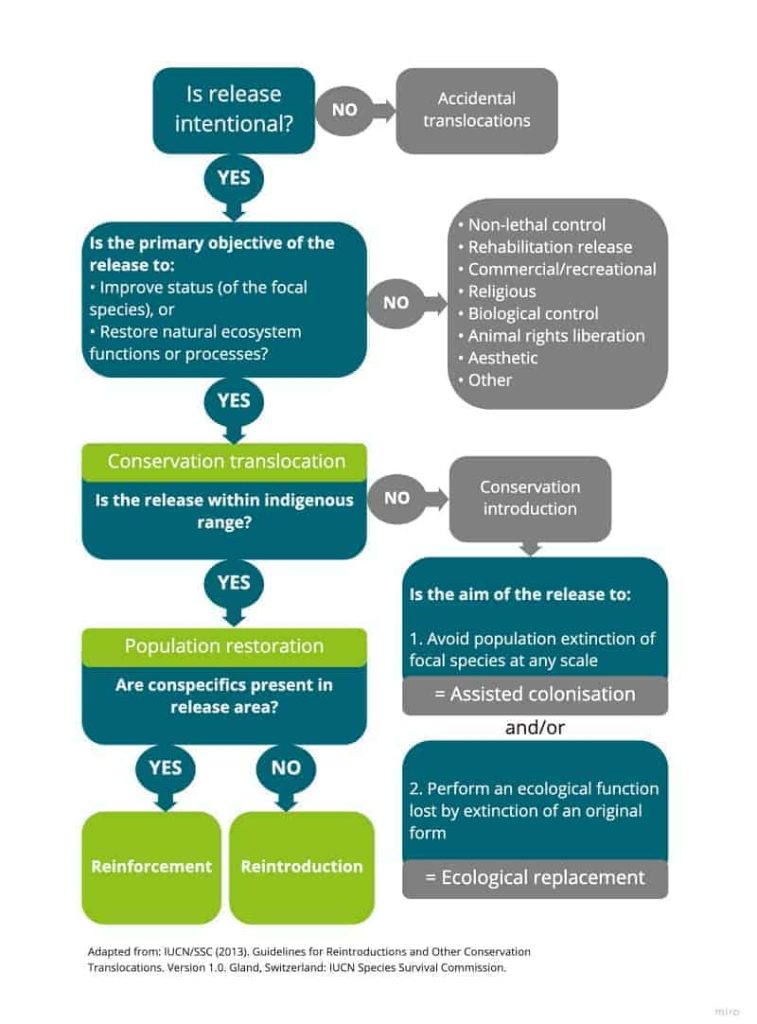IUCN Reintroduction Guidelines
What is translocation?
According to the IUCN Species Survival Commission:
“Conservation translocation is the intentional movement and release of a living organism where the primary objective is a conservation benefit: this will usually comprise of improving the conservation status of the focal species locally or globally, and/or restoring natural ecosystem functions or processes.“
Conservation translocations can entail releases either within or outside the species’ natural, indigenous range. The natural range of a species refers to the established or deduced distribution based on historical records, oral accounts, or physical evidence of its presence. In cases where direct evidence is insufficient to confirm the past presence, the existence of suitable habitat in ecologically suitable proximity to the confirmed range can serve as reasonable evidence of previous occupancy.

Important criteria for translocations
IUCN Species Survival Commission recommendations include:
- A conservation translocation can yield intended conservation benefits, but it also entails risks to ecological, social, and economic interests.
- There should generally be strong evidence that the threats responsible for previous extinctions have been accurately identified and eliminated or significantly mitigated..
- Assessment of any translocation proposal should include identification of potential benefits and potential negative impacts in terms of ecological, social, and economic aspects. This process is comparatively simpler when reinforcing or reintroducing species within their native range, as opposed to translocating them outside that range.
- Global evidence demonstrates that introducing species outside their native range frequently leads to unforeseen and severe ecological, social, or economic consequences, often manifesting long after the introduction.
- Consequently, translocating species outside their native range can bring forth high risks that are often challenging or impossible to predict accurately.
- Therefore, although risk analysis should be proportionate to the presumed risks, justifying a conservation introduction necessitates a particularly high level of confidence in the organisms’ post-release performance, including their long-term viability. Additionally, it requires assurance regarding the ecological suitability and the social and economic interests of the communities in the release area.
- When making decisions about translocation, the level of risk must be carefully weighed against the expected benefits.
- If a significant degree of uncertainty remains or if it is not possible to reliably assess that a conservation introduction presents low risks, the translocation should not proceed, and alternative conservation approaches should be explored.
Translocation Decision Support Diagram

Balancing Benefits, Risks, and Ecosystem Impacts
Conservation translocation plays a crucial role in achieving tangible conservation benefits at population, species, and ecosystem levels, extending beyond individual translocated organisms.
In order to be used as an effective ecosystem restoration and conservation tool, translocation demands thorough justification whether employed independently or in conjunction with other strategies. Assessing feasibility necessitates careful consideration of conservation benefits alongside the costs and risks associated with both the translocation itself and alternative conservation approaches.
Translocation entails multiple risks, impacting focal species, associated communities, and ecosystem functions in both source and destination areas, with additional considerations for human welfare. To ensure responsible decision-making, proposed translocations must undergo comprehensive risk assessments, tailored to the specific circumstances. When risks are deemed high or uncertainty persists regarding their potential impacts, proceeding with the translocation should be avoided.
Particular caution surrounds translocating organisms beyond their indigenous range due to the substantial risk involved. Numerous instances exist where species released outside their natural habitats have become invasive, significantly altering vegetation communities and ecosystems, leading to severe and far-reaching consequences.
By striking a delicate balance between maximising conservation benefits and minimising risks, conservation translocation can be a valuable tool for safeguarding biodiversity and ecological integrity.
More information: Guidelines for reintroductions and other conservation translocations



